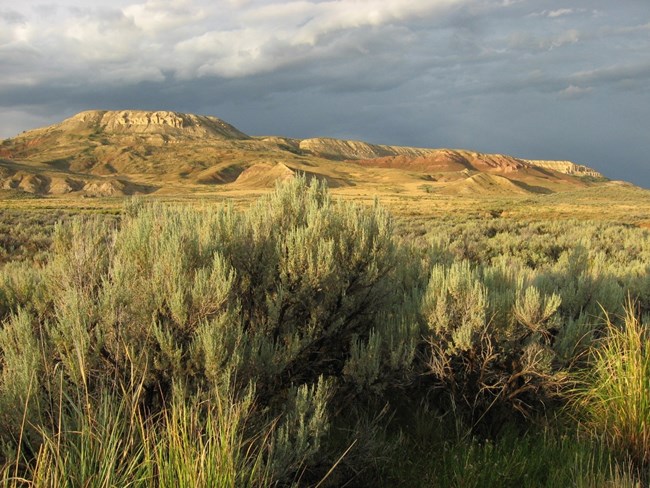Learn about NRCAs
The Natural Resource Condition Assessment (NRCA) Program provides framework, funding, and publishing support to parks to aid in the synthesis and documentation of natural resource conditions. Condition assessment reports are a tool to describe selected park resources, and record a snapshot of their current condition, identify trends, and identify potential or current threats and stressors. Understanding the condition and trend of natural resources is key for parks and NPS planners to appropriately prioritize and allocate stewardship resources.

NPS Photo
Traditional NRCA Report: 2017
In order to better understand the natural resources and processes within Fossil Butte National Monument, a Natural Resource Condition Assessment was written and published in 2017. The National Park Service and St. Mary’s University of Minnesota collaborated to write the assessment which evaluated 16 resource topics:
- Low sagebrush community |
- Herptiles (reptiles and amphibians) |
||||||||
- Big sagebrush community |
- Birds |
||||||||
- Aspen woodlands |
- Greater sage grouse |
||||||||
- Mixed conifer woodlands |
- Pygmy rabbit |
||||||||
- Seeps, springs, and slump pond aquatic habitat |
- Elk |
||||||||
- Cushion plant communities |
- Dark night skies |
||||||||
- Alkali flats community |
- Viewscape |
||||||||
- Montane shrublands |
- Paleontological resources |
One resource (elk) was in good condition; six resources were considered to have conditions of moderate concern (big sagebrush communities, aspen woodlands, seeps, spring sand slump pond habitats, alkali flats community, greater sage grouse, and paleontological resources); one resource (dark night skies) was considered to be in significant concern; and the remaining eight resources were not given a condition rating due to lack of clear reference data or current data.
Fossil Butte National Monument is an extremely diverse park, supporting a range of unique features, from internationally significant paleontological features to a protected and recovering sagebrush steppe ecosystem and views that encompass both historic and prehistoric landscapes, along with a variety of wildlife species. Understanding the condition of these resources can help managers prioritize management objectives and better focus conservation strategies to maintain the health and integrity of these ecosystems. This type of assessment is a very important first step in understanding how park resources may change with ongoing and future climate change and other challenges.
Fossil Butte National Monument is an extremely diverse park, supporting a range of unique features, from internationally significant paleontological features to a protected and recovering sagebrush steppe ecosystem and views that encompass both historic and prehistoric landscapes, along with a variety of wildlife species. Understanding the condition of these resources can help managers prioritize management objectives and better focus conservation strategies to maintain the health and integrity of these ecosystems. This type of assessment is a very important first step in understanding how park resources may change with ongoing and future climate change and other challenges.
For other reports and natural resource datasets visit the NPS Data Store.
Source: NPS DataStore Collection 7765 (results presented are a subset). To search for additional information, visit the NPS DataStore.
Last updated: December 16, 2022
